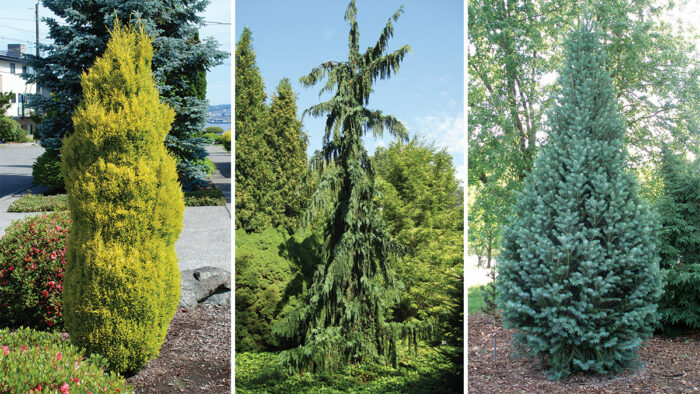
In elementary school I was told that it was poor form to use more than one exclamation point at the end of a sentence. However, when I design gardens, I’m always looking for strong, vertical elements that will act as exclamation points in the landscape, and I’ve found that it’s very effective to use more than one.
Traditional conifers already add enormous value to gardens. They contribute color, structure, and texture year-round. They are visual anchors that can act as single specimens or look great in a mass planting. Tall, skinny conifers—often referred to as columnar conifers—have the additional value of being adaptable in a wide range of situations, including in areas of limited space such as foundation beds, narrow side yards, and smaller gardens. Many of them are perfect for screening and hedging. Plus, they just look cool. There are so many narrow conifers available that there is one for every type of garden. And each one is guaranteed to make an eye catching statement.
‘Taylor’ Eastern red cedar is a tough-as-nails native with a sophisticated look
Name: Juniperus virginiana ‘Taylor’
Zones: 2–9
Size: 20 to 30 feet tall and 3 feet wide
Conditions: Full sun; moist to dry, well-drained soil
Native range: Eastern North America
A selection released by the Nebraska Statewide Arboretum in 1992, ‘Taylor’ Eastern red cedar is uniform and has extremely dense branching and tight blue-green foliage with a hint of silver. In winter, the foliage takes on a bronzy tone (pictured). The strong, arrow-straight vertical form of this tree gives designs a formal look, and its strong central leader helps shed heavy snow loads. ‘Taylor’ tolerates a wide range of soil types except for overly wet, rarely needs any pruning, and is very resistant to drought.
‘Cupressina’ Norway spruce has a great shape and super-thick foliage
Name: Picea abies ‘Cupressina’
Zones: 3–8
Size: 25 to 30 feet tall and 6 feet wide
Conditions: Full sun; evenly moist, well-drained soil
Native range: Central and northern Europe
If you’re looking for an elegant variety with a teardrop shape, look no further. ‘Cupressina’ has a distinctive form, where the bottom and top of the tree are narrower than the middle. It features extremely dense fastigiate branches that shed snow and ice well and are covered in very ornamental deep green foliage that sometimes features a hint of blue. This tree grows quickly, but careful pruning can control its size.
For bright yellow foliage, try ‘Swane’s Golden’ Italian cypress
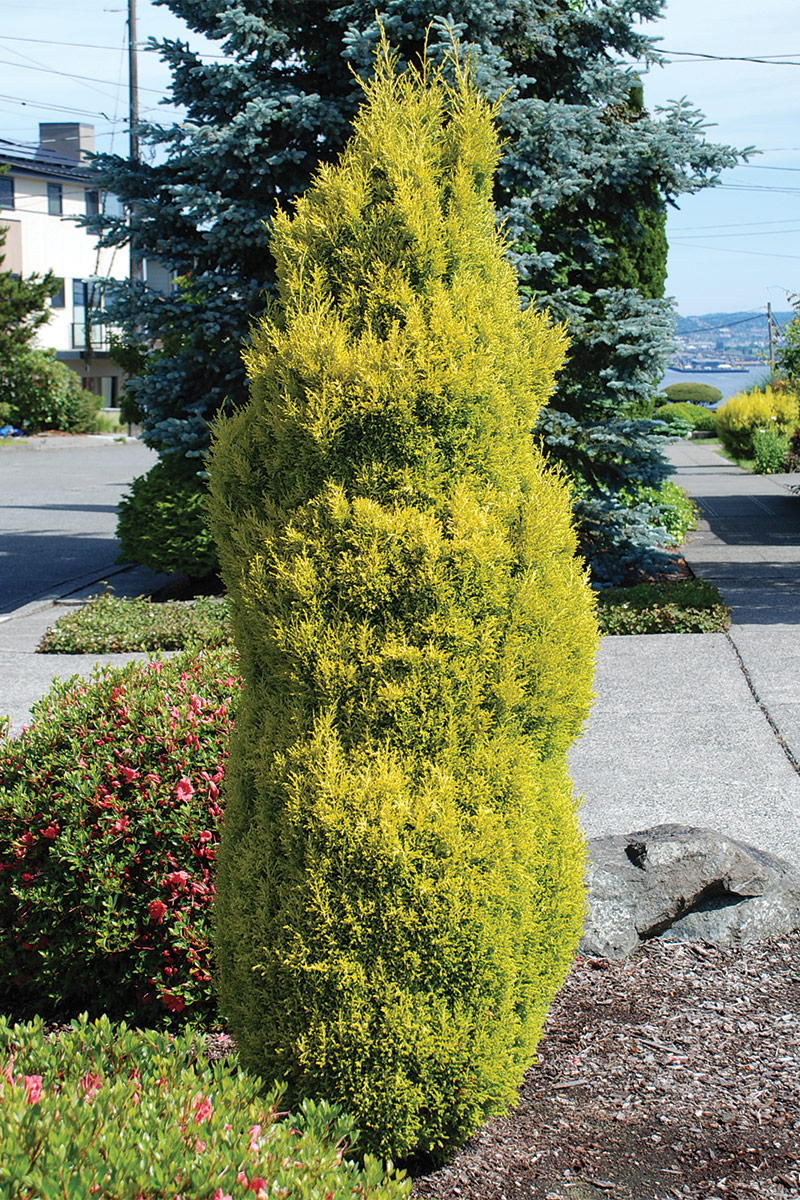
Name: Cupressus sempervirens ‘Swane’s Golden’
Zones: 7–9
Size: 15 to 20 feet tall and 3 feet wide
Conditions: Full sun; average to dry, well-drained soil
Native range: Southern Europe, western Asia
This very narrow form of Italian cypress features bright, golden-yellow new growth that retains excellent color, although the foliage gets an orange cast in winter in colder climates. ‘Swane’s Golden’ looks exceptional as a specimen plant, but it also works well for planting in rows. Just make sure to provide 6 feet of spacing for air circulation when growing it in a hedge. Minor shearing and pruning can help maintain shape as needed. Be sure to avoid overly rich soil, and water sparingly.
Weeping branches make ‘Green Arrow’ Nootka cypress stand out
Name: Callitropsis nootkatensis ‘Green Arrow’, syn. Chamaecyparis nootkatensis ‘Green Arrow’
Zones: 4–8
Size: 30 to 35 feet tall and 5 feet wide
Conditions: Full sun to partial shade; moist, well-drained soil
Native range: Coastal areas of the Pacific Northwest, British Columbia, and southern Alaska
‘Green Arrow’ Nootka cypress, also sometimes called Alaska cedar, makes a remarkable centerpiece in any garden with fertile soil. Fast growing and featuring dark foliage, sometimes with a bluish tinge, this variety has weeping branches that grow close to a strong central leader. Any wider, lateral branches that develop can be removed as desired. The spire-shaped, majestic silhouette of this variety makes it hard to miss. Its weeping branches may make it appear as though its top is leaning, but generally ‘Green Arrow’ grows straight.
Conical white fir has striking light blue foliage
Name: Abies concolor ‘Conica’
Zones: 3–7
Size: 10 to 15 feet tall and 5 feet wide
Conditions: Full sun; well-drained soil
Native range: Western United States
The powder blue foliage of this compact selection is noteworthy every day of the year. With a strongly fastigiate form featuring dense branching, ‘Conica’ needs very little pruning unless you want to control its height. The tight, dense form of this variety makes it an excellent addition to a foundation planting or in mixed borders, where it will wow with its color. Conical white fir is adaptable to most soil types, although you should avoid heavy clay.
Learn How to Stake and Train Conifers
While many conifers are able to grow without any staking or training at all, newly planted trees may require it in order to establish well. Traditional stakes, guying anchors, and other systems may be necessary, depending on the situation.
The adaptable ‘Arnold Sentinel’ Austrian pine is rigidly straight with upright branches
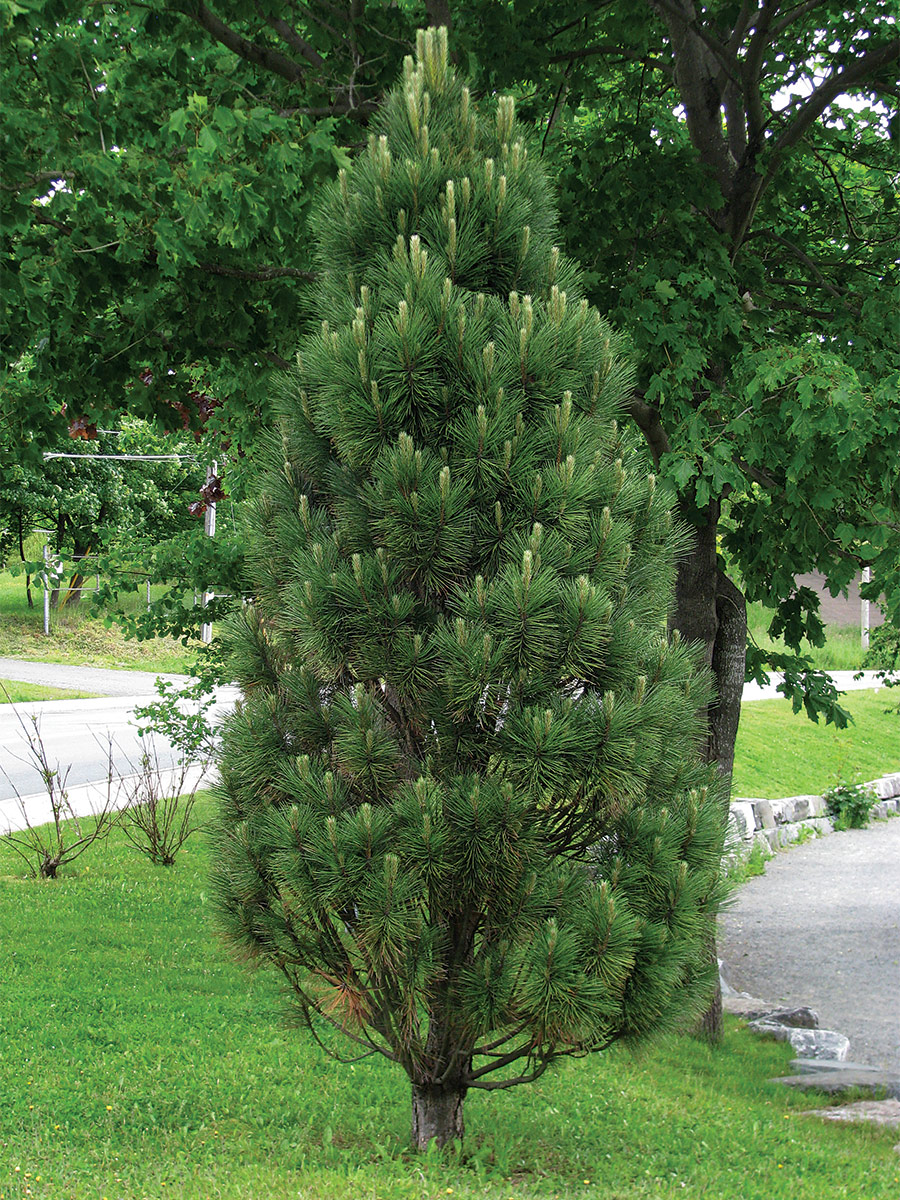
Name: Pinus nigra ‘Arnold Sentinel’
Zones: 4–8
Size: 20 to 25 feet tall and 5 to 7 feet wide
Conditions: Full sun; well-drained soil
Native range: Southern Europe, western Asia
This narrow pine offers significant, bold texture and features dark needles on upswept branches that grow very close together, forming a rigidly columnar silhouette. The candles (new growth), which emerge in spring, are yellow-green and create significant contrast (pictured). This species is known for its drought and salt tolerance, as well as its ability to grow in a wide range of soil types as long as they’re not too soggy. Pinch back new growth to help maintain the size if you want a smaller specimen.
‘American Pillar’ may be the best narrow arborvitae of all
Name: Thuja occidentalis ‘American Pillar’
Zones: 3–8
Size: 25 feet tall and 4 to 5 feet wide
Conditions: Full sun to partial shade; well-drained soil
Native range: Eastern North America
While there are quite a few narrow selections of arborvitae on the market, this variety has a very fast growth rate with a notably uniform and dense habit. It will grow into a tidy columnar shape with little to no pruning. If it’s used in a hedge situation, 3 feet of distance should be provided between specimens. Resistant to extreme heat and cold and adaptable to different soil types, ‘American Pillar’ has a strong central leader with branches that won’t splay. Potential deer browsing is always a concern with this species and should be taken into consideration.
‘Joe Kozey’ Japanese umbrella pine’s dense structure makes it able to withstand heavy snow
Name: Sciadopitys verticillata ‘Joe Kozey’
Zones: 5–9
Size: 20 feet tall and 6 feet wide
Conditions: Full sun to partial shade; moist, well-drained soil
Native range: Japan
This selection of umbrella pine withstands snow loads much better than the straight species, with sturdier branching held close to the trunk. Thick, rubbery, yellow-green needles grow on upright-facing whorls of foliage. The texture and glossiness of this conifer, combined with the narrow form, make it a highly desirable selection for any garden with the right climate. This species is both deer and disease resistant. It benefits from being in a sheltered location with slightly acidic soil. ‘Joe Kozey’ is a unique accent plant where that exclamation point is needed.
‘Pendula Bruns’ weeping Serbian spruce looks like it’s straight out of a Dr. Seuss book
Name: Picea omorika ‘Pendula Bruns’
Zones: 4–8
Size: 15 feet tall and 3 feet wide in time
Conditions: Full sun; moist, well-drained soil
Native range: Drina River Valley in western Serbia and eastern Bosnia and Herzegovina
I’ve grown and observed many specimens of this variety over the years, and it seems to me that each has its own personality, with no two alike. The narrow, pyramidal form features strictly weeping branches that cascade gracefully down from a strong central leader. The blue-green or yellow-green needles have a silver underside, which creates a bicolor effect. Unless staked, the terminal leader may twist and turn every which way, creating a unique form. This tree is always a conversation piece.
Reasons to prune a conifer
While most of the varieties featured here require little or no pruning to maintain their shape, it may still be necessary to prune in the following situations.
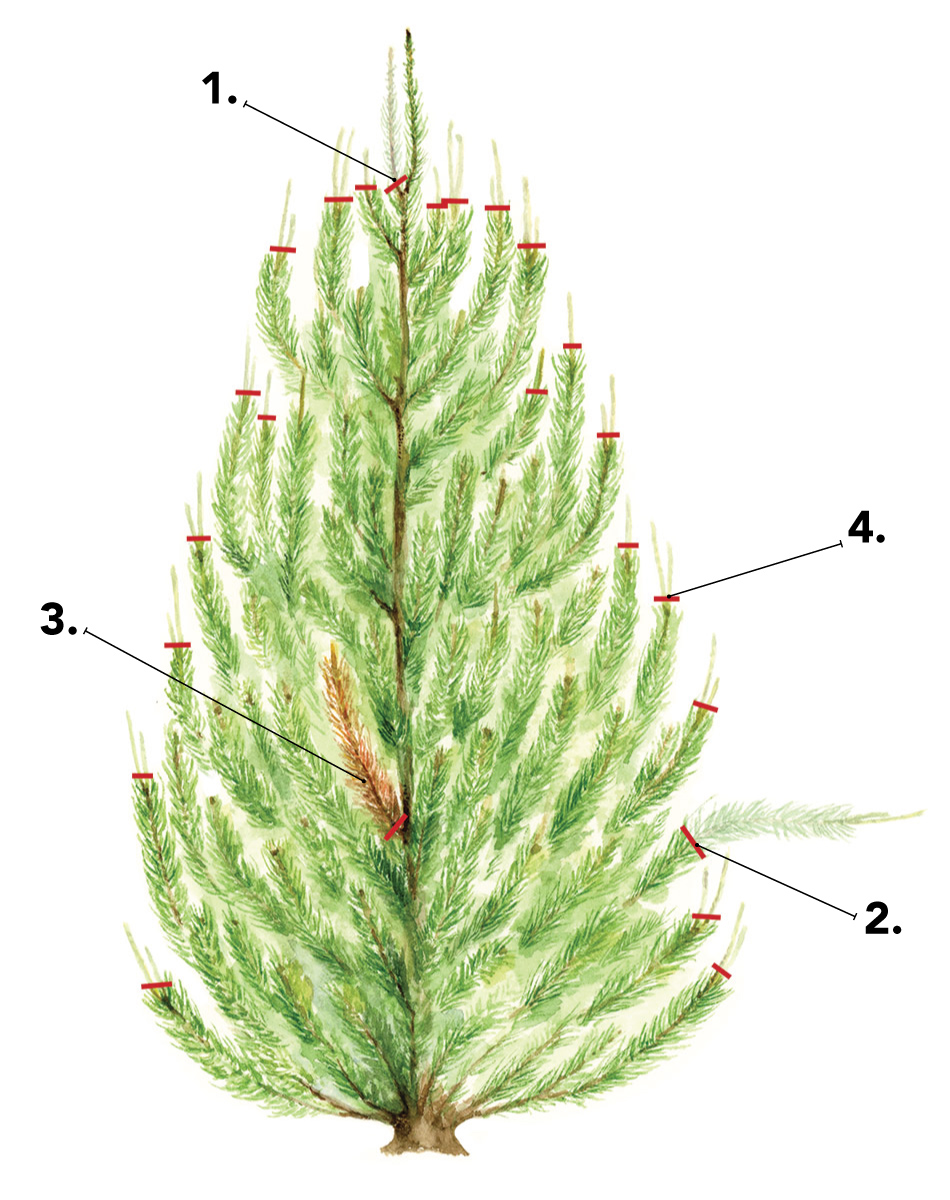
1. Competing central leaders
It’s best for each tree to have one central leader for its overall structural health. If you see a second leader forming, you can cut it back either to the trunk or partially down the stem to keep the growth in line with the branching structure of the rest of the tree. Research the species-specific window for the best time to do this type of pruning. It will likely be sometime in winter or early spring.
2. Undesired lateral branches
Vigorous, erratic, or lengthy side branches on an upright conifer might occasionally look out of place. This can be addressed by cutting them back proportionally to fit the desired form and configuration of the tree. This type of pruning should also generally be done in winter or spring.
3. Dead, diseased, or damaged branches
This type of growth can be removed year-round as needed. Be sure to use sharp, clean tools and to disinfect them between each pruning cut and between specimens.
4. Controlling for size
Some pruning for size is accomplished late in spring after the first flush of growth. This involves selectively reducing the size of the new foliage to restrict the overall growth of the tree. For some species, this is called “candling.” Pruning for size should be minimal; a severe reduction in conifer size can lead to damage and disfiguration and should only be done in extreme circumstances, such as after a tree has suffered storm damage. Topping a conifer, or removing the central leader, is bad for the health of the tree and can lead to unpredictable, weak growth.
Mark Dwyer is the owner of Landscape Prescriptions by MD in Janesville, Wisconsin. He is also the garden manager for the Edgerton Hospital Healing Garden and is the Midwest regional reporter for FineGardening.com.
Photos, except where noted: courtesy of Mark Dwyer


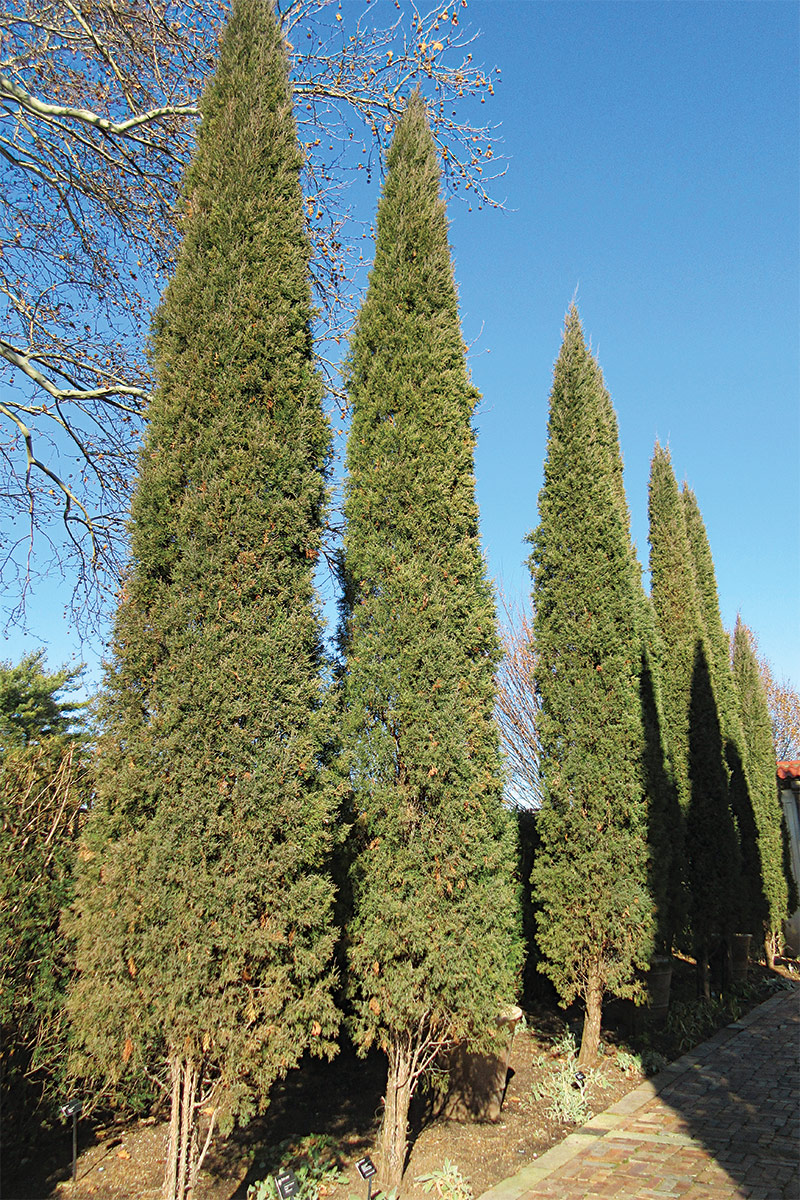
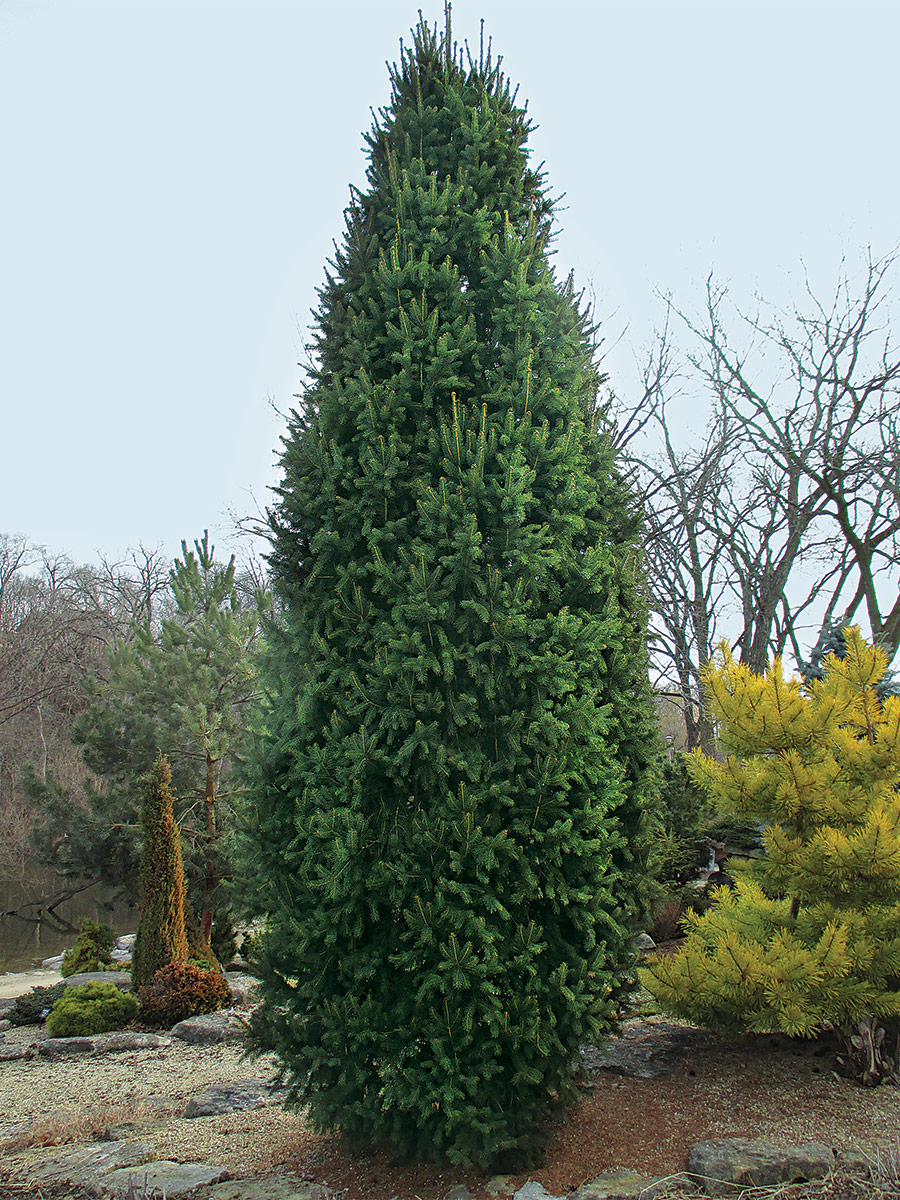
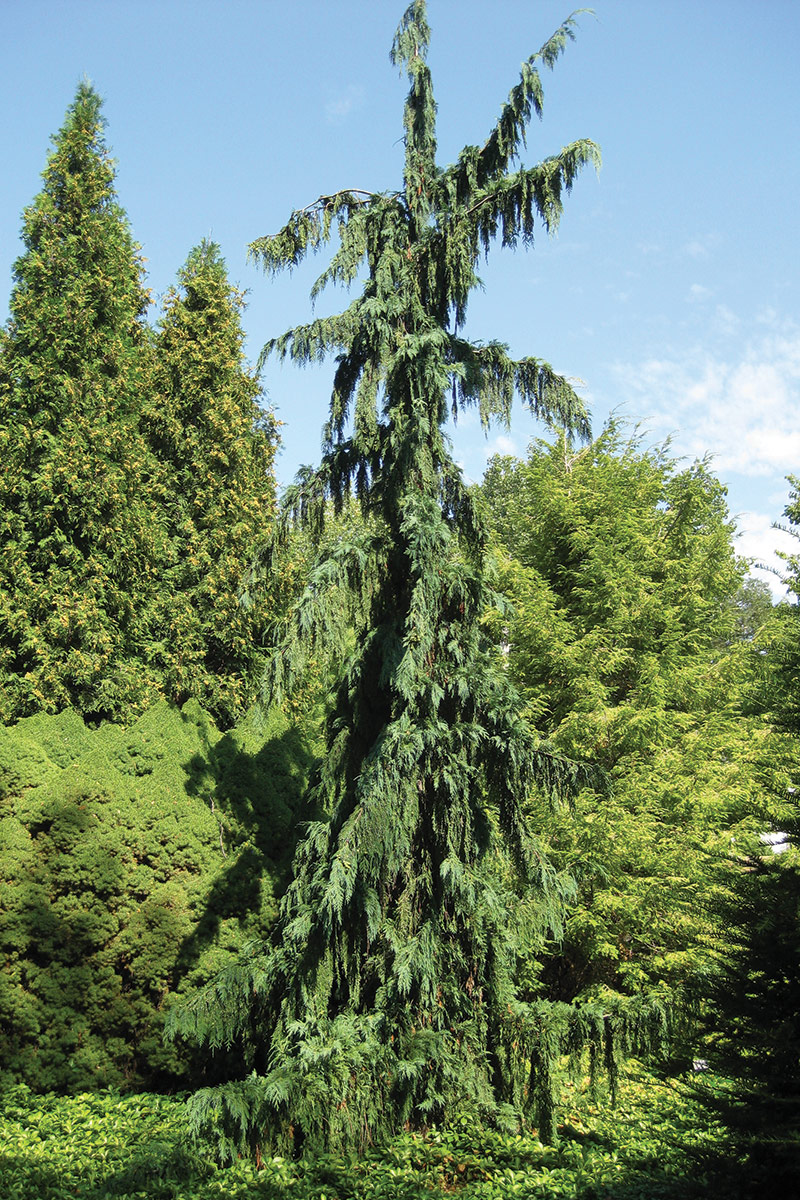
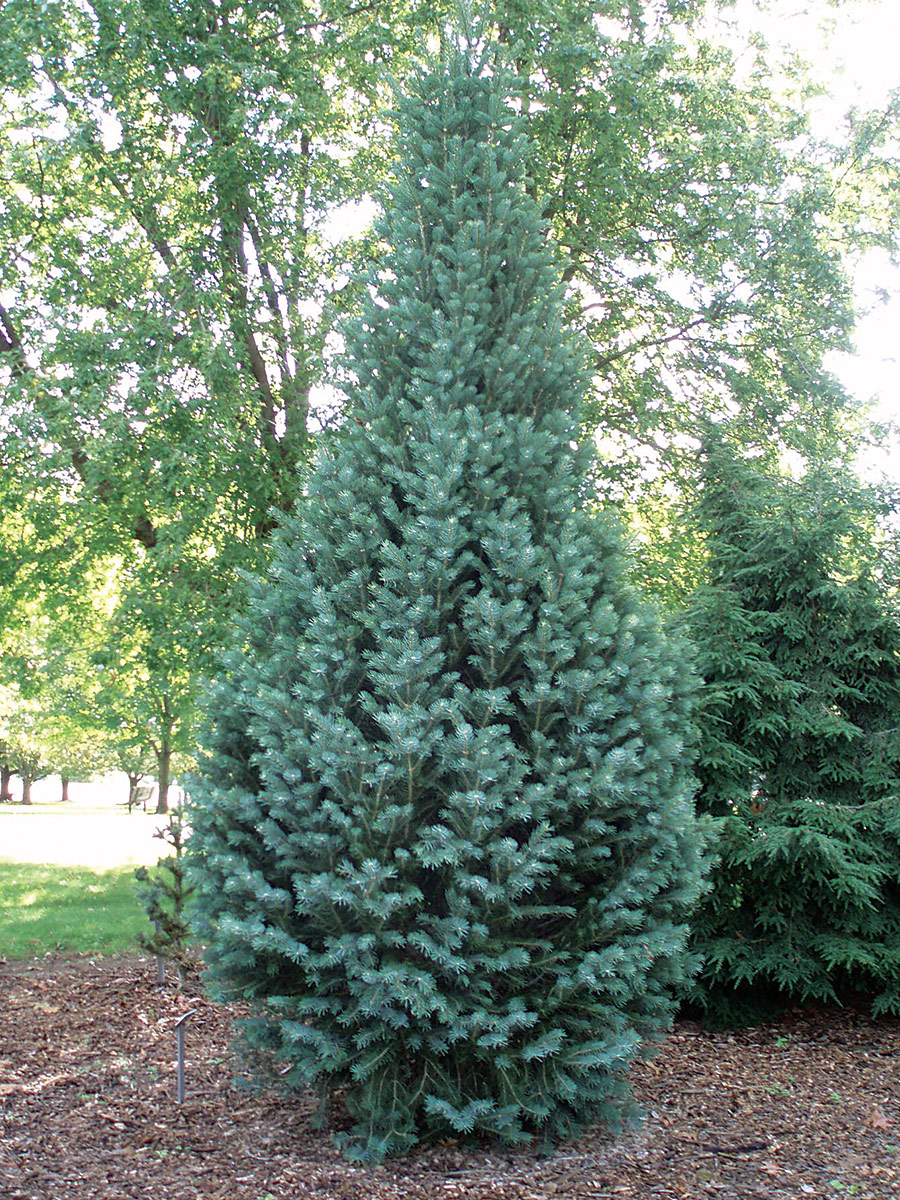

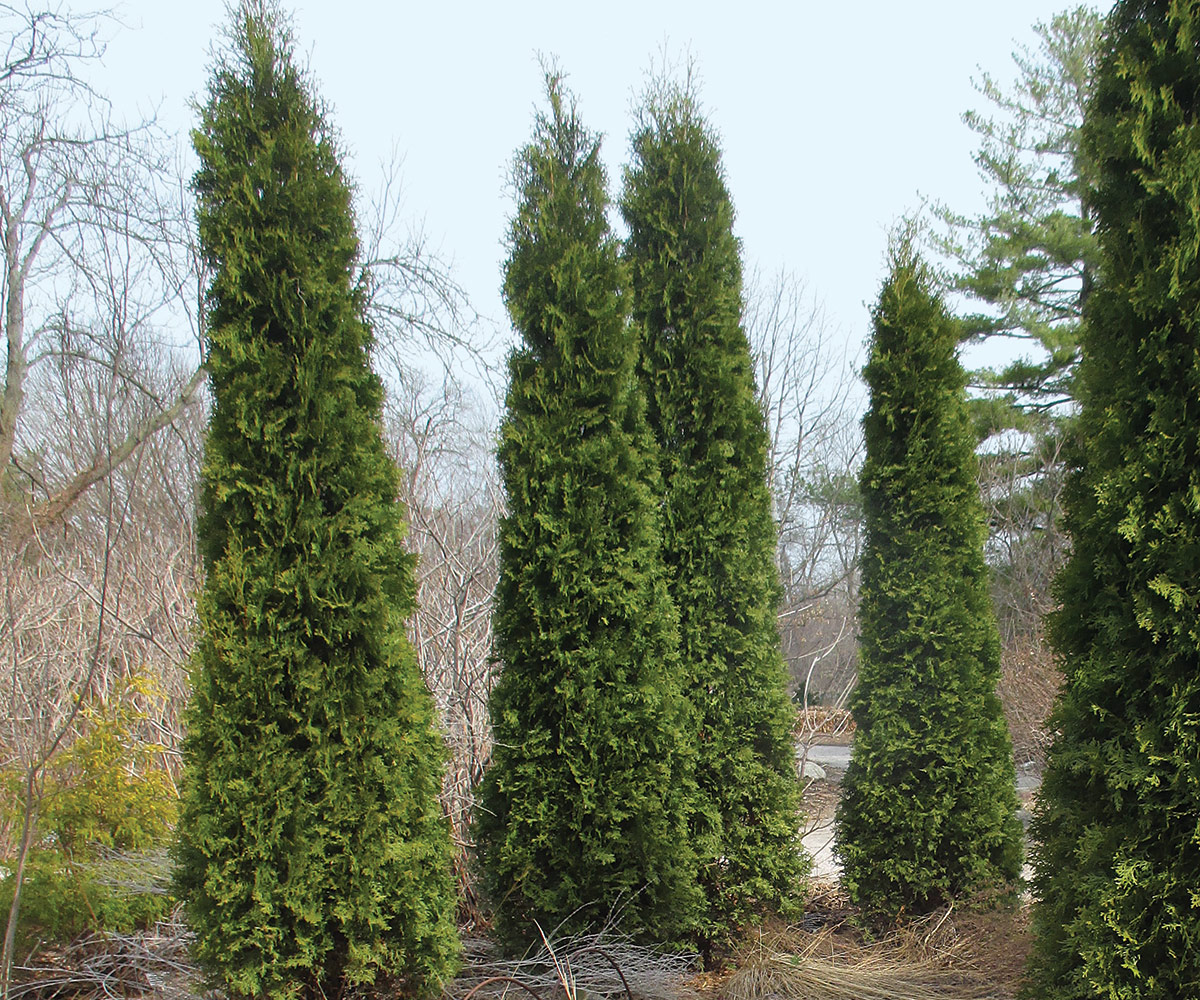
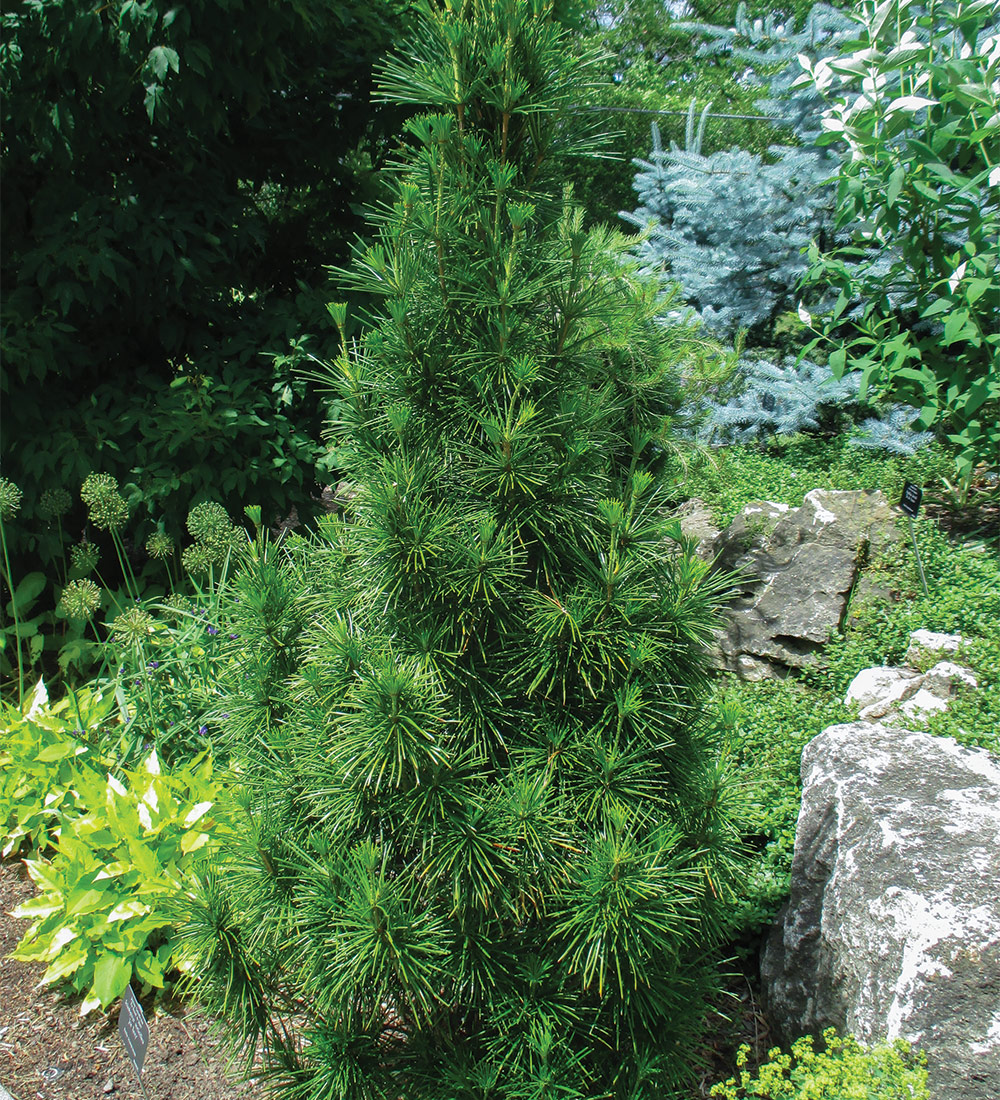
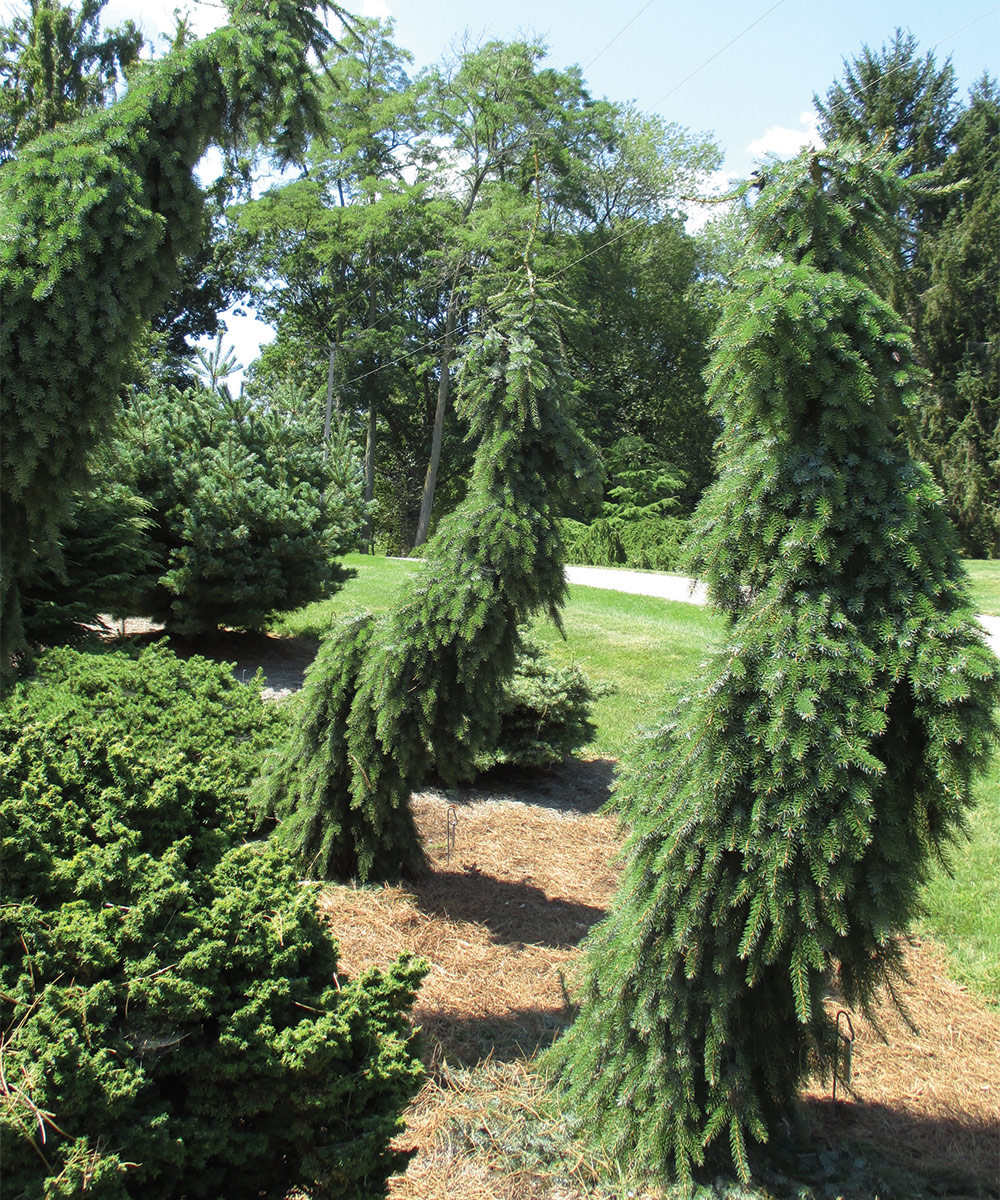
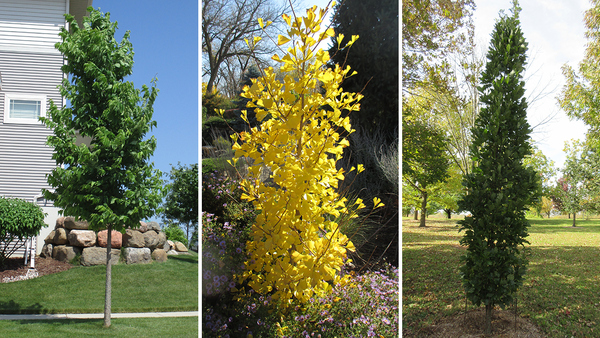
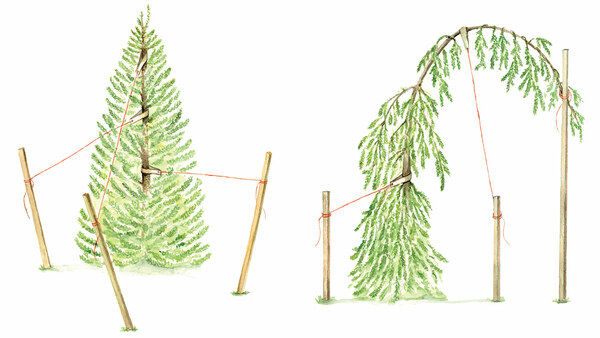
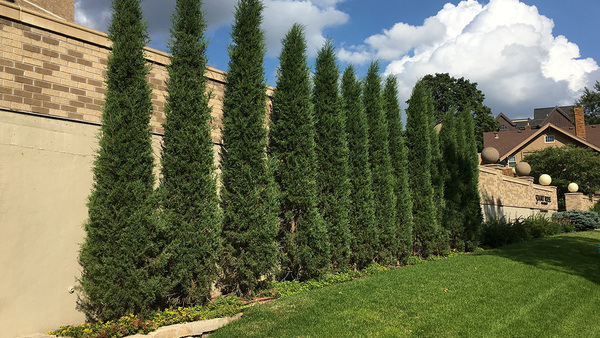
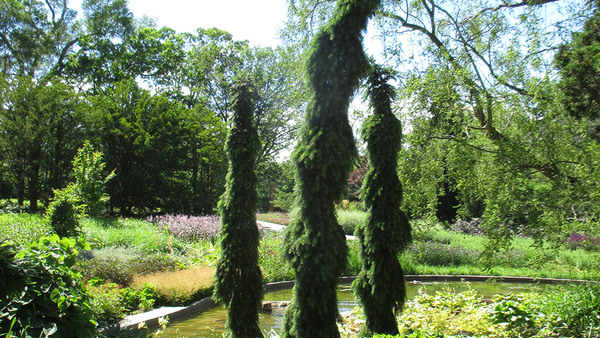












Comments
Log in or create an account to post a comment.
Sign up Log in